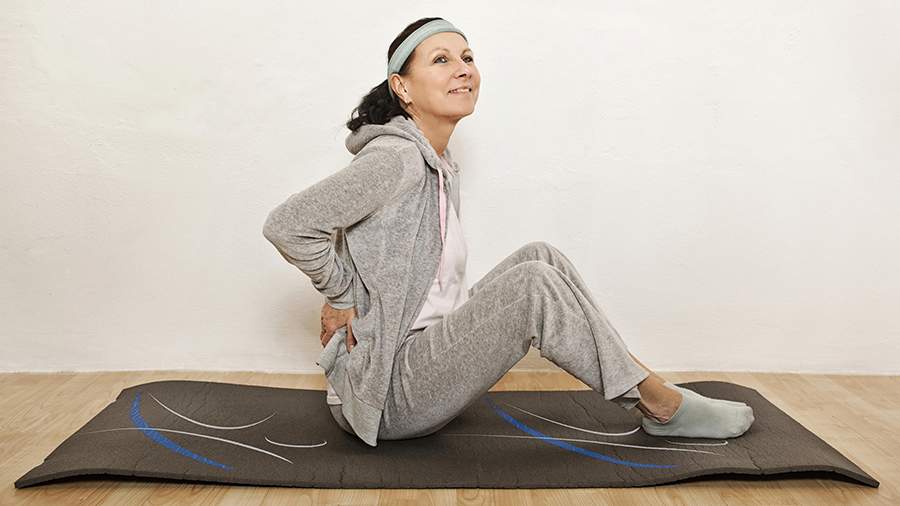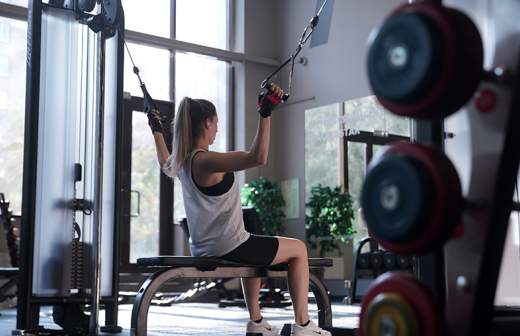The expert called the signs of dangerous pain after exercise

Pain after exercising is normal. Many people perceive muscle pain as a sign of a "good" workout, but not all pain is acceptable and beneficial. On June 1, fitness expert Akulina Bakhturina, senior coach of the international network of ballet and stretching studios LEVITA, told Izvestia about the boundary between the natural recovery of the body and injury.
"Quite often, novice athletes and experienced clients of fitness centers experience muscle pain after a good workout. In professional parlance, this pain is called DOMS (Delayed Onset Muscle Soreness) — the exact translation of the term sounds like "delayed muscle soreness." In fact, this is the "pleasant" pain when you start feeling your body, every muscle you've worked with," she explained.
As a rule, such delayed muscle pain appears 12-48 hours after physical exertion. This is a natural reaction to micro-damage to muscle fibers that occur during training and lead to positive changes in the body.
First of all, this "right" pain is always symmetrical. Secondly, according to Bakhturina, the sensations in the body will be pulling, slightly aching. The pain will increase with stretching or contraction of the muscle. But at the same time, painful sensations do not prevent a person from moving, although it becomes less comfortable to do so.
To relieve unpleasant symptoms, the specialist recommends light activity: walking, yoga, swimming, massage or self-massage. Heat relieves muscle pain well — it can be a shower, a bath or a sauna. In addition, it is important to maintain an adequate diet and sleep regime.
If pain occurs during or immediately after exercise, it is a dangerous symptom. Incorrect sensations in sports can be described as acute, sharp, uneven pain. It is important to be able to recognize and distinguish body signals from DOMS. The main differences are that the pain is always local and very sharp, can radiate to other parts of the body, increases at rest and restricts movement. Such symptoms may indicate a sprain, a torn ligament, or inflammation.
"It is important to stop exercising immediately if the sensations appear during sports. You can apply cold to the sore spot in the first 24-48 hours. And then consult a medical specialist as soon as possible. It is especially important not to postpone the visit if the pain persists or worsens," the coach warned.
Another variation of abnormal sensations during or after sports is chronic pain. Some athletes believe that every trip to the gym should be accompanied by pain, you just need to endure them. This is a completely wrong opinion. If the pain repeats day after day, it makes itself felt even without exertion — this is no longer a question of training, but a signal of chronic inflammation or dysfunction.
To minimize unpleasant sensations after and during a workout, it is important not to skip elements such as warm-up and hitching. It is necessary to increase the workload and set new goals in sports gradually. It is especially important to take slow steps with additional weights and intensity of loads.
"To avoid health problems, always pay attention to technology: quality is more important than quantity. Be sure to plan your body's recovery — not only rest days, but also sleep, nutrition, and relaxation. And most importantly, listen to your own body," the expert advised.
Earlier, on January 28, DDX Fitness fitness trainer Yuri Averyanov recommended that you stop delivering groceries to your home and go shopping on your own. He noted that a low-activity lifestyle has become one of the most common problems of our time, as people spend most of the day sitting at a computer.
Переведено сервисом «Яндекс Переводчик»

